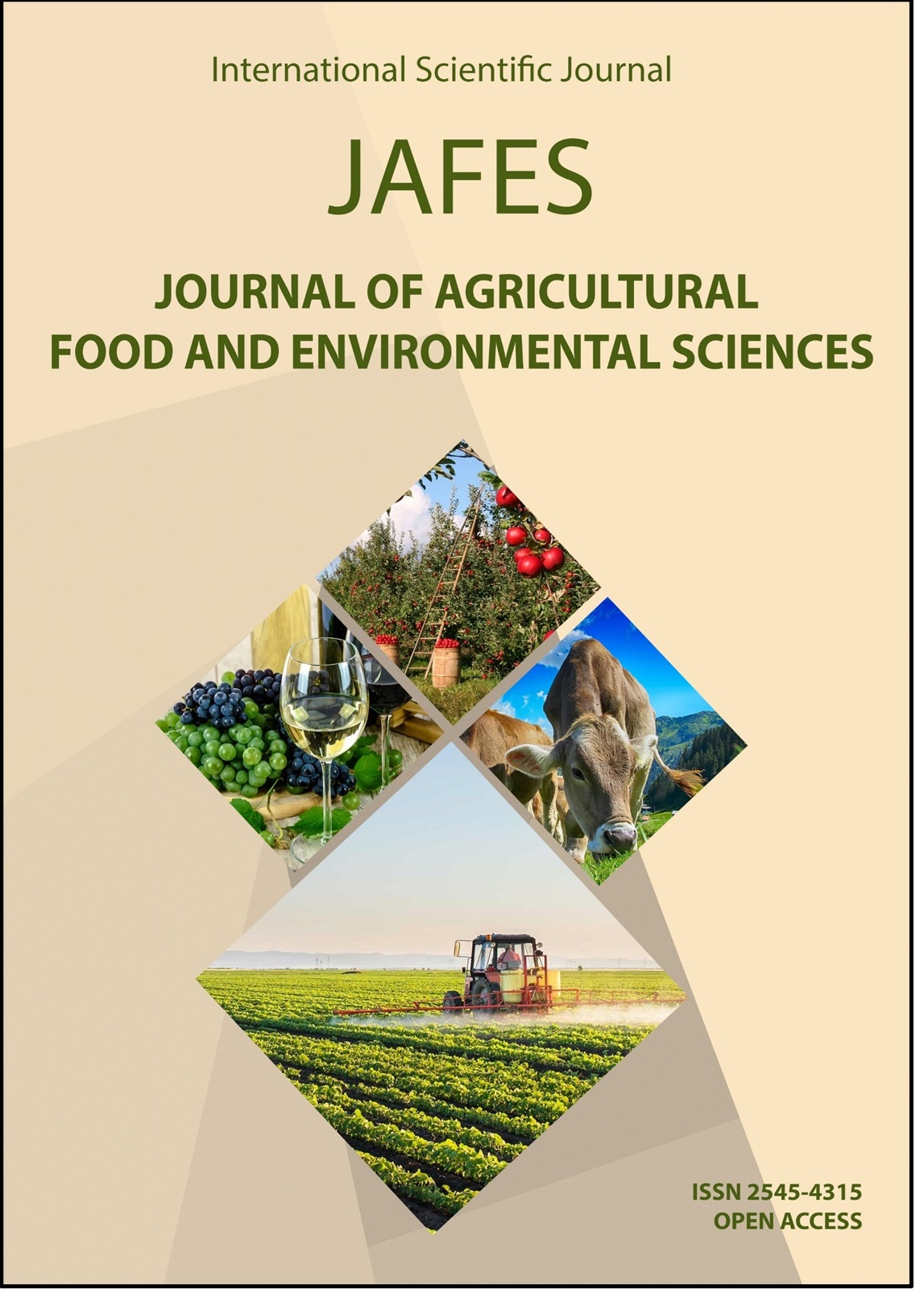FORAGE QUALITY TRAITS OF SOME ASTERACEAE FAMILY SPECIES FOUND IN NATURAL FLORA OF SOUTHEASTERN ANATOLIA
Клучни зборови:
ADF, Asteraceae, crude protein, NDF, macro minerals, relative feed value.Апстракт
This study was carried out in order to reveal the forage quality traits of twelve Asteraceae family species found in Natural Flora of Southeastern Anatolia in terms of animal nutrition. For this reason, forage samples of the species were taken with three replications during flowering periods of the plant species. According to statistical analysis results, there found highly significant (P<0.01) differences among the species in terms of all of the investigated traits. And the following ranges were determined among the species in the investigated traits; crude protein content (CP) 13.37%-26.90%, acid detergent fiber (ADF) content 21.78%-34.17, neutral detergent fiber (NDF) content 28.69%-40.52%, digestible dry matter (DDM) content 62.28%-71.94%, dry matter intake (DMI) 2.97%-4.21%, metabolizable energy (ME) 9.57-11.45 MJ/kg, relative feed value (RFV) 144.2-230.4, phosphor (P) content 0.27%-0.40%, potassium (K) content 1.97%-5.42, calcium (Ca) content 1.21%-1.78%, magnesium (Mg) content 0.32%-0.49%, Ca/P ratio 3.25-5.19 and K/(Ca+Mg) ratio 1.19-2.84. Result of the study revealed that Notobasis syriaca (L.) Cass. and Onopardum acontium L. species by far the highest CP content, and except for Gundelia tournoforti L. var. armata all of the examined species had the best forage quality, Prime Forage Class, by considering their RFV values. Moreover, it was determined that the macro mineral contents of the species were above the recommended values for livestock feeding. Additionally, it was determined that most of the examined species had below critical grass tetany value (2.2), away from risk of the grass tetany disorder. Finally, due to Ca/P ratio of the species well above recommended level, the danger of Milk Fewer or Hypocalcaemia disease should be taken into account when using forages of the Asteraceae family species in animal feed.



